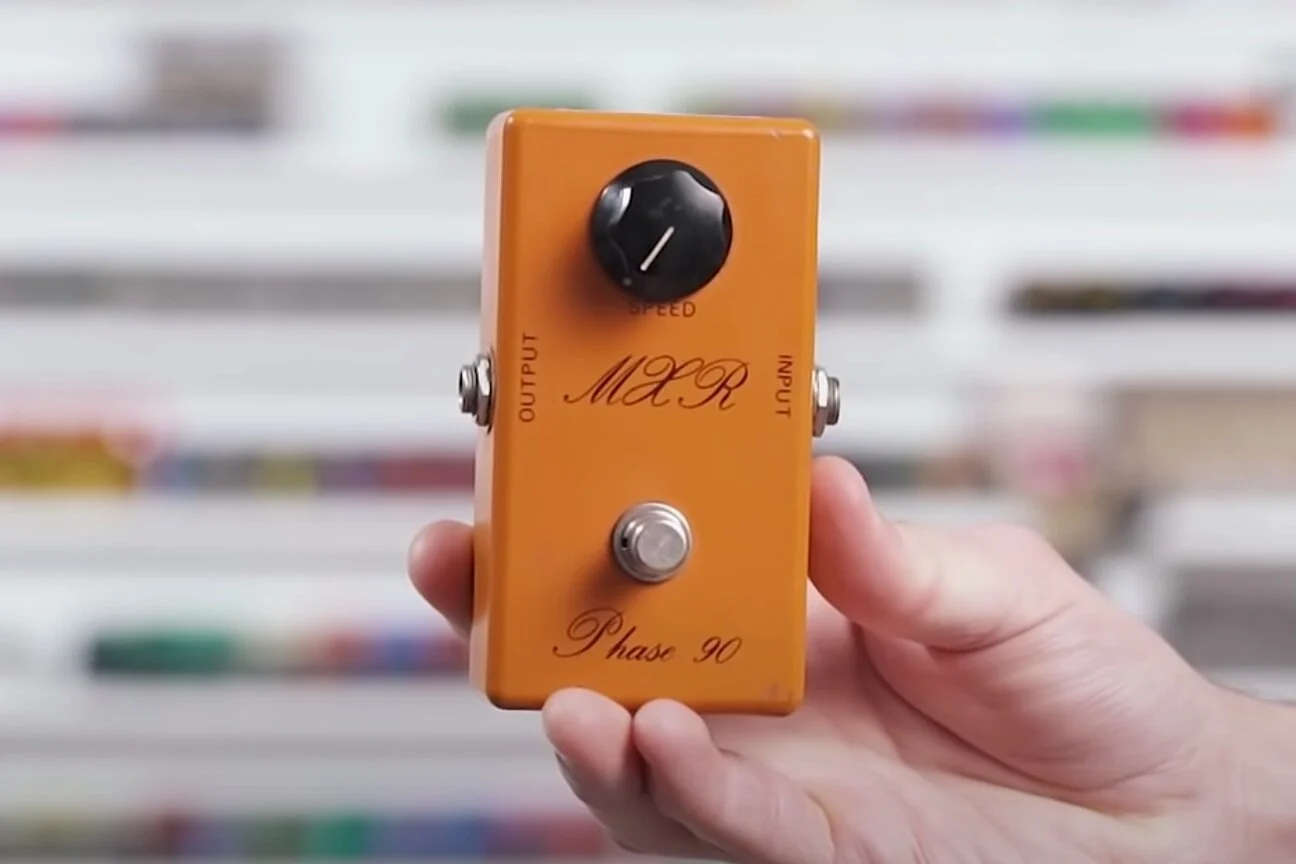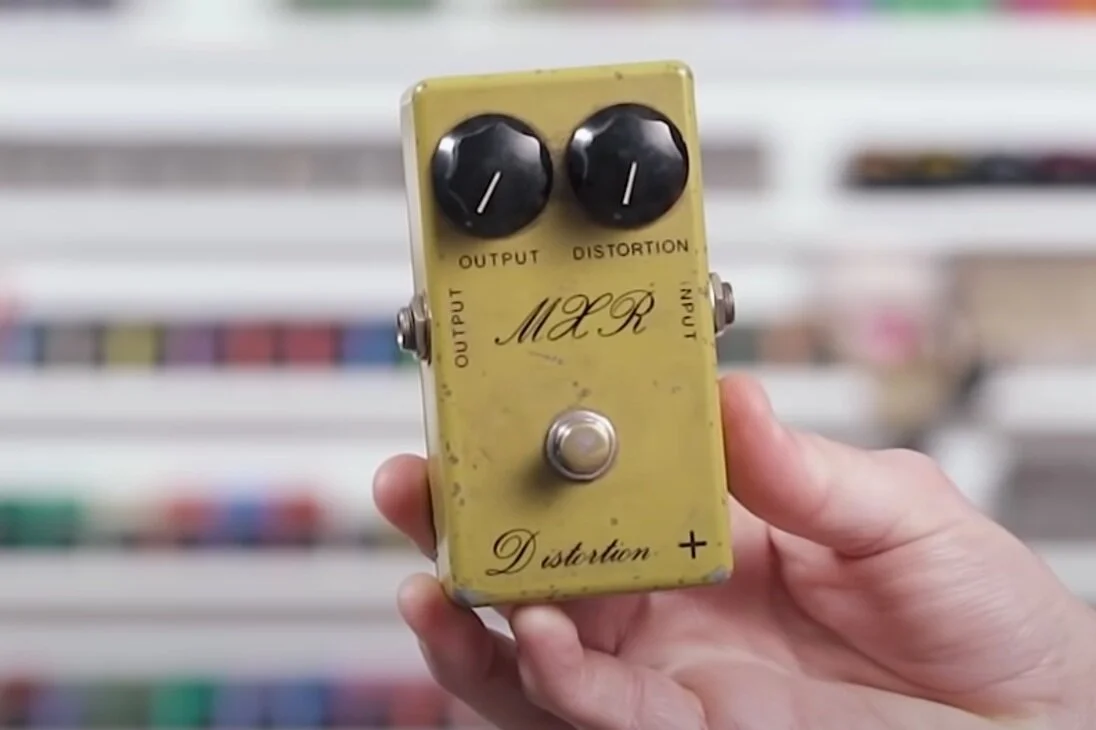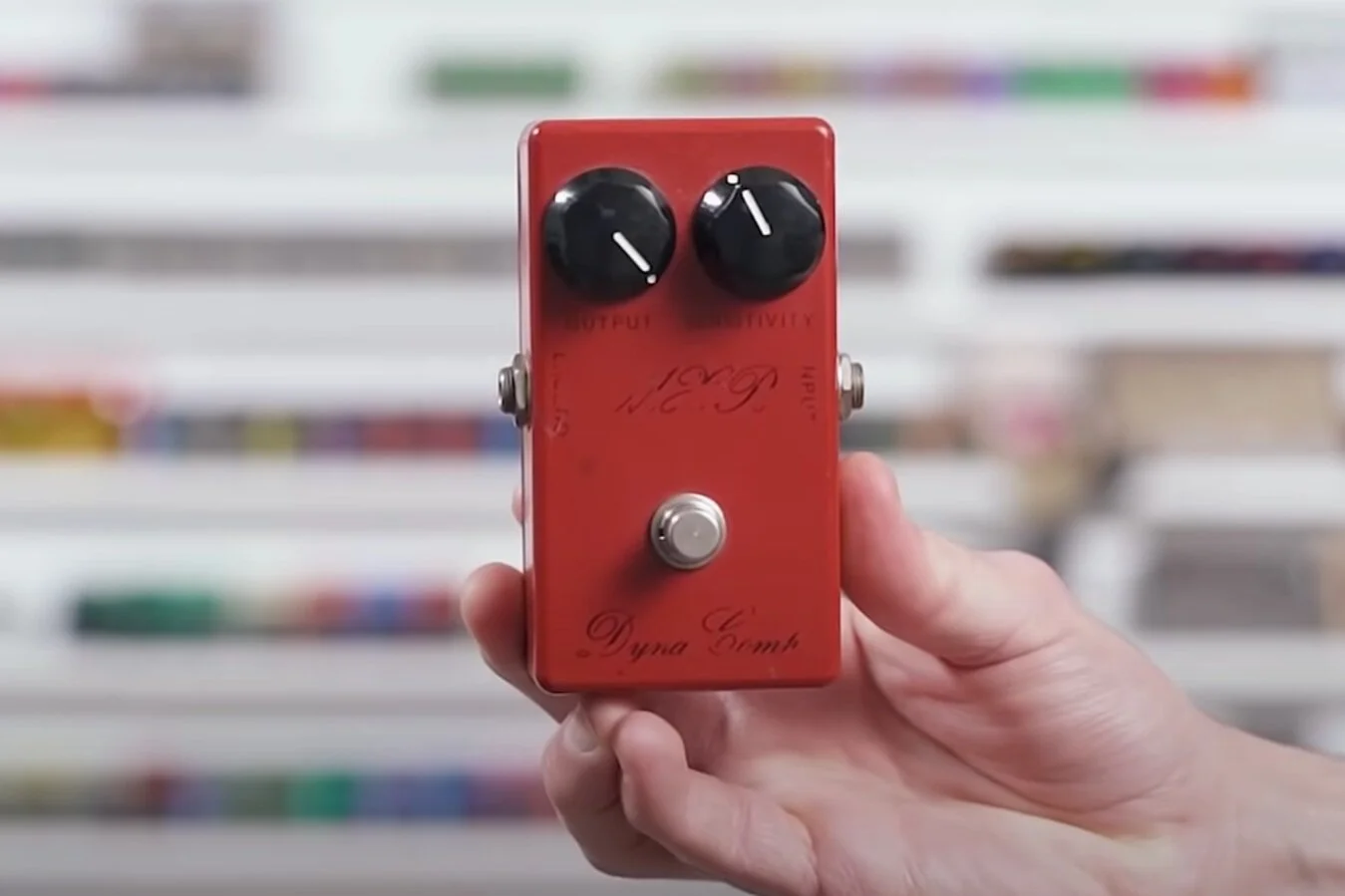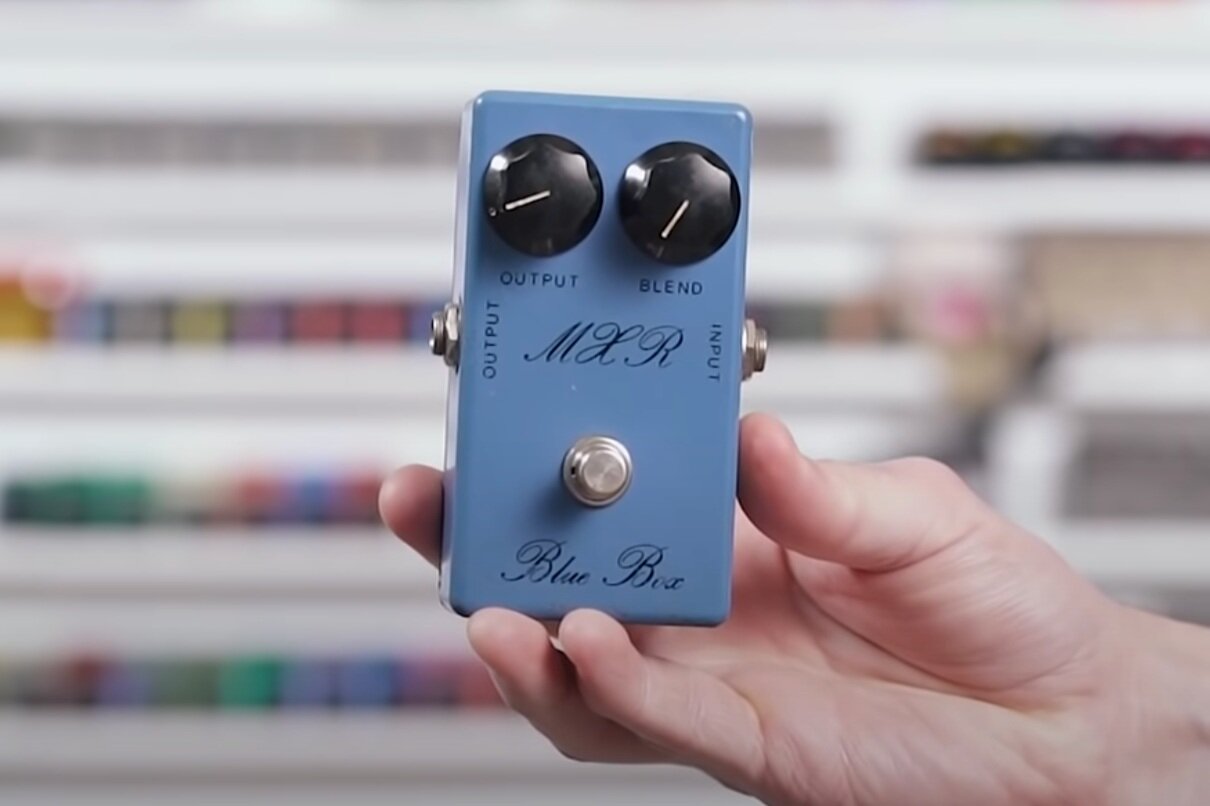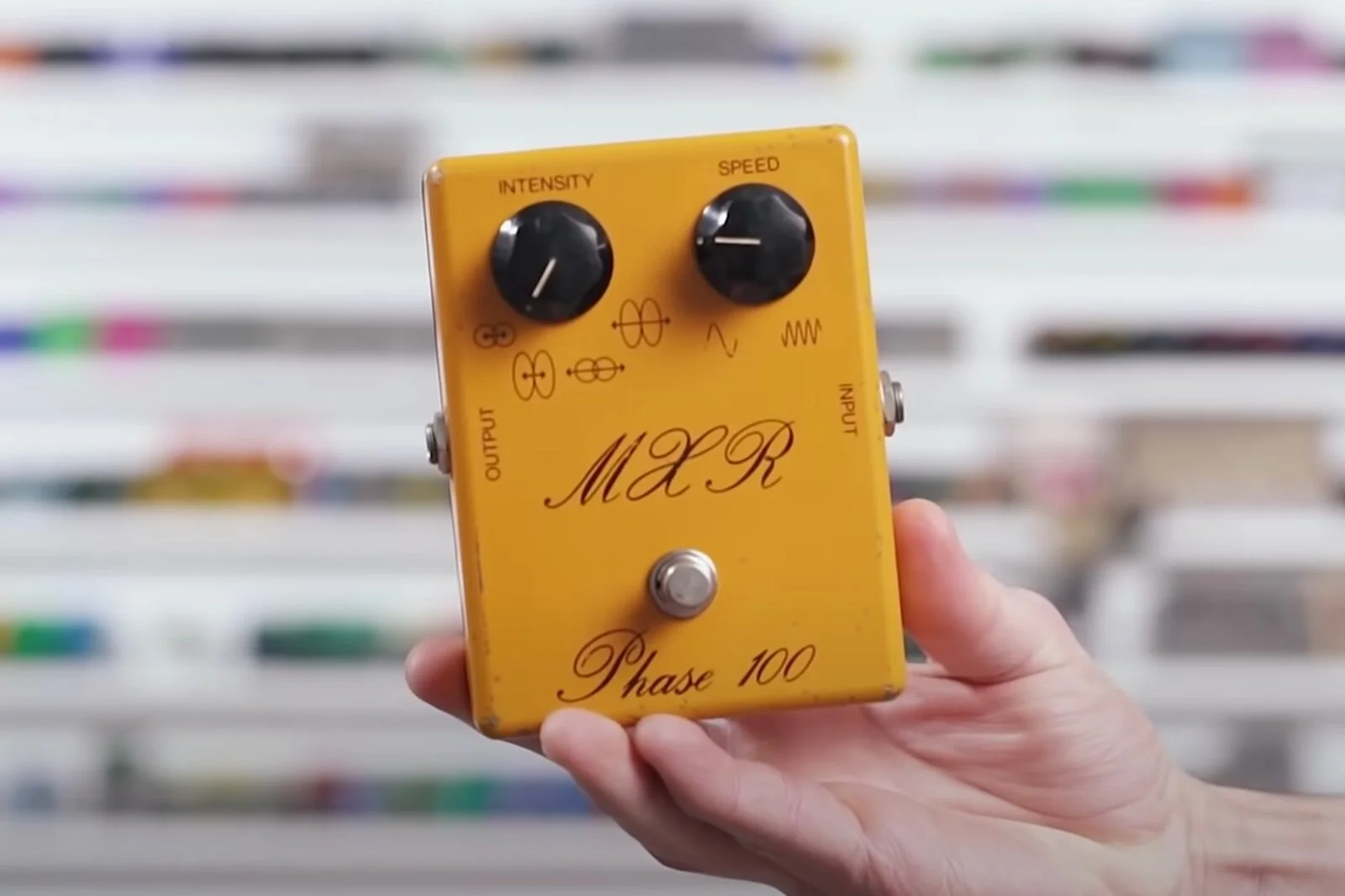How MXR Pedals Became Legendary
In this article, I'm going to show you the very first MXR pedals ever made.
Yup. Just like Fezzik and Inigo Montoya, we’re going back to the beginning.
I'm going to teach you about their history, and how this baller company went on to influence every pedal company that came afterwards. Honestly, it's hard to find a pedal company more responsible for the success and coming boom of the pedal industry through the eighties, nineties, and into the 2000s than MXR, so let’s just dive in.
The Early History of MXR
It all started in Rochester, New York around 1971, 1972, when two high school friends, Keith Barr and Terry Sherwood, met and decided to start an audio repair business. They called it Audio Services and they fixed mixers, hi-fi systems, and other brands of guitar pedals. They were dissatisfied with the quality and sound of the pedals on the market at the time, which led electronics wizard Keith to inventing and developing the MXR Phase 90 in 1974.
The name MXR was given to them by a friend who said, “Since you fixed mixers, you should just call it MXR, short for mixer.” Well, they're not really known for mixers anymore; they're known for pedals, so they incorporated the name in as MXR Innovations, thinking they would branch out as a company to do other things. They never did much beyond guitar pedals, but the pedals they did make are still pretty amazing.
Their very first print ad appeared on the back of a Rolling Stone magazine, a very minimalist shot of the Phase 90 pedal on a bank of leaves. No explanation. No price. Just a short tagline above that said, “We are here…”, complete with ellipses. Not eerie at all.
Apparently the advertisement worked, though. In the seventies, MXR was a multi-million dollar company with over 250 employees. No big deal.
MXR Phase 90
Phase 90
The first era of MXR, starting around 1974-1975, is called the Script Era. Now, these pedals are identified by the script or cursive writing on the enclosure, in comparison to the later seventies creations which use block writing. Interestingly, the very first pedals MXR ever made are not made in the standard, heavy MXR-stamped enclosure. They're made in a DIY enclosed by a company called Bud, so they're referred to as Bud Box enclosures.
These are the very first pedals MXR ever made, so if you're at a pawn shop and see an MXR pedal with bud stamped on the back, grab it quick. These are a gold mine. The original pedals are painted by Terry and Keith in their basement shop with a $40 Sears spray system, and the script is hand printed by Keith. The circuit boards are also etched in a fish tank by Keith.** Most of these early pedals were all sold out of the back of their cars at local shows.
**No, that’s not a typo. This is still a very popular method with DIYers. #themoreyouknow
The Phase 90 was Keith's totally original phaser design. In fact, there was really only one other commercially successful phaser on the market for musicians. And it wasn't even really a guitar pedal. It was the Maestro Phase Shifter, and it was huge. Seriously, look up a photo of this thing. It's the size of my head, and I have a giant head. It has push buttons and it basically simulates a rotary speaker.
Now, the Phase Shifter sounds good. It's been on some famous recordings and they sold quite a few.
But Keith wasn't really impressed with the user interface. He wanted to take these circuits and make them simple, accessible, and small. That's why the Phase 90 is really, really genius. The design comes from a radio textbook, like a handbook of schematics and circuits. It was a phaser schematic diagram that allowed people on radios to phase out interrupting signals. He took that, adapted it, and added to it. I’m going to quote Bear Grylls here to sum up what Keith did here: “Improvise. Adapt. Overcome.”
He really did, though. He took a piece of gear that people loved, and he made it small enough to throw into your gig bag. This is right up there with the Tube Screamer as one of the most iconic pedals in history, and it’s definitely the most classic phaser ever.
MXR Distortion +
Distortion +
The second MXR pedal ever created was the Distortion +, also known as the Distortion Plus. This is arguably as famous as the Phase 90. This is a fantastic circuit. It is a classic hard clipping 1970s op-amp distortion, in the family of the DOD 250 and the Ross Distortion. And it's awesome. It's pure magic. I don't know what else to say.
Coincidentally, they sold 20,000 of these pedals per year in the early eighties. With inflation, that’s like two hundred thousand guitar pedals in 2020.**
**Pretty sure that math is right.
MXR Dyna Comp Compressor
Dyna Comp Compressor
The next pedal on our list, the Dyna Comp compressor, is also pretty dang famous in the pedal community. I think you’re noticing a pattern here. MXR makes iconic pedals. It’s what they do.
The Dyna Comp is important, though. It's the first compressor ever to use the RCA VCA 3080 chip. This has been copied so many times that it's painfully beautiful. I say that seriously, because there's some great copies and clones of this circuit with tweaks, but this original Dyna Comp is the classic. It’s a really important piece of pedal history. Before this there were a couple of compressor pedals, but not much beyond a bunch of big studio compressors that were really hard to stuff in a gig bag.
Now, I do want to address the elephant in the room. To quote my good friends in the band Poison, “every rose has its thorn,” and these pedals are no exception. When you take the back off a classic 1970s MXR pedal, there's a nasty foam that falls out everywhere. It's disgusting. You can't even get the backplate on without it flying everywhere. If we're going to talk about how great this line of pedals is and how amazing Keith and Terry were, we’ve got to talk about the foam. This is hideous. It’s a travesty. It’s awful.
The fact that this line of pedals succeeded and influenced all of us, in spite of this glaring design flaw, is a miracle. And that’s all I’m going to say about it.
Blue Box Octave Fuzz
Next up was the Blue Box octave fuzz. This is probably my favorite MXR pedal, but it actually didn't do very well when it was released. It's not as legendary as some of the others, but it's really collectible and hard to find an original Script Era pedal, because they didn't make quite as many as they made the compressor or the phaser.
Now, this was inspired by the sound of an Edgar Winter song called “Frankenstein”, where he uses the sub-octave generator effect. I actually don't know how that worked (and that’s hard for me to openly admit), but Keith heard it and wanted to make a box that replicated the same sound. He did, and it's pretty awesome.
Phase 45
MXR released the Phase 45 in response to the success of the Phase 90. They made the Phase 45 as a simplified phaser, meaning it's not more simple to use, it's just a simpler circuit.
It has less stages than the Phase 90. This is a less dramatic phasing sound. It's more subtle, and it really nails the sounds that I like in a phaser. This is the kind of phaser that you can just leave on for the whole set and let it do its thing. And, like the Phase 90, this pedal lends itself a lot more to the sound of an original univibe. Basically, this pedal has range, and I like that.
MXR Blue Box Octave Fuzz
MXR Phase 45
Noise Gate Line Driver
Now, this brings me to a mystery that is very hard to deal with. I’m talking about the Noise Gate Line Driver in my collection. Here's the problem. Supposedly, this pedal came out a year after the Phase 90, the Blue Box, the Distortion +, and all the rest of them, but here's the hangup: it's in a bud box. That means it's pre-mass production, before the company was incorporated.
Or does it? Yes, this enclosure is a bud box, but it’s a circuit that wasn’t released by MXR until a later time. And don’t get me started on the MXR stamp that it’s supposed to have if it’s post-mass production. There isn’t one. So, was it created pre-mass production or post-mass production? I don’t know. This thing is an anomaly in time and space. It’s a glitch in the Matrix. And I don’t like that.
Phase 100
Okay, hypothetically you own a pedal company in the 1970s, and your two most successful pedals are the Phase 90 and the Phase 45. What do you do?
If you’re MXR, you make a third phaser pedal and you call it the Phase 100.
I’m not going to beat around the bush with this one. It's absolutely fantastic. It has more options, a little more control. It's in a bigger case. I think it looks cooler. It looks pretty baller, honestly. Historically, Keith Richards has used this pedal a lot, which is one reason that it sells so well. It's on a ton of Rolling Stones hits.
MXR Noise Gate Line Driver
MXR Phase 100
Present Day MXR
Around 1977, MXR went over to the block logo enclosures instead of script logos. A lot of the circuits stay exactly the same. Unfortunately by 1984, MXR completely imploded due to the rising fame and stardom of new Japanese companies like BOSS. Long story short, BOSS and companies like it took over the market completely.
Now, Keith Barr was already dabbling in digital creation at this point, because he just wasn't ever satisfied. He was a true engineer, a really brilliant guy. He launched off on his own company and started Alesis. If you're familiar with their products, they're really, really brilliant.
During this time, Keith also invented the FV-1 Spin chip set, which is used in tons of pedal companies’ products, and even designs that I use. It's one of the only pedal-design-specific electronic parts that was really ever made. It's pretty amazing.
Jim Dunlop bought the MXR trademark in 1987, and he relaunched everything. They continue to make really faithful recreations of these vintage MXR pedals, so if you don’t feel like dropping three hundred dollars on a vintage unit, you can get a really faithful recreation instead.
Either way, get your hands on an MXR pedal and play it. These pedals are iconic for a reason. I can’t recommend them enough.

